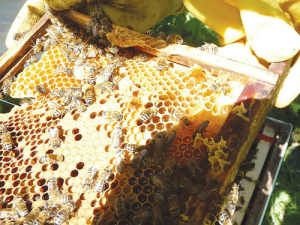Sweet or sour deal?
Not all stakeholders involved in the proposed merger of honey industry groups - ApiNZ and Unique Manuka Factor Honey Association (UMFHA) combining to form a larger organisation - think the deal is so sweet.
 Hive numbers have continued to drop, reflecting successive years of modest producer prices and challenging trading conditions.
Hive numbers have continued to drop, reflecting successive years of modest producer prices and challenging trading conditions.
The recent release of the annual MPI Apiculture Monitoring Data has confirmed the impact of last summer’s wild and wet weather on the 2023 honey production season.
The reported data shows the total honey production reached 12,000 tonnes, down from 22,000 in 2022 and a long way short of the five-year average of 20,900 tonnes.
The poor return reflects last summer's extreme weather events, including Cyclone Gabrielle and relentless rain which battered the country, especially in the north.
“The national 2023 honey harvest represents the weakest production performance since 2012 when there were substantially fewer hives in operation,” says Apiculture New Zealand chief executive Karin Kos.
The national honey yield per hive (20.1 kgs) was only two-thirds of that achieved in the 2022 season, but this average masked a divergence in fortunes between those operating in the North and South Islands.
For the first time in over a decade, the national yield was split evenly between the islands (6,000 tonnes produced in each). For the North Island, this reflected an historically low 14.4kg per hive, compared with 32.6kg in the South Island.
The monitoring data also shows registered hive numbers have continued to drop, reflecting successive years of modest producer prices and challenging trading conditions.
Total numbers were down to just over 600,000 in April, the majority (417,000) of which continue to be located in the North Island.
However, the North Island is also where the productive capacity is falling fastest with hive numbers down 22% on 2022 in the North Island compared to 7% in the South Island.
“Last season was very tough for beekeepers in the North Island, with many saying they had never experienced such adverse conditions,” says Kos.
“However, forecasts for the current season are for hotter and drier weather, particularly in the east of New Zealand, which should prove to be more favourable for honey production,” she says.
Meanwhile, a subdued global economy has proved challenging for honey exporters.
Export revenue for the year to June 2023 was down 17% to $379 million but with expectations of improved trading conditions in 2024, MPI’s latest Situation and Outlook for the Primary Industries report is predicting honey export revenue to bounce back by 8% to $410 million for the year to June 2024.
When American retail giant Cosco came to audit Open Country Dairy’s new butter plant at the Waharoa site and give the green light to supply their American stores, they allowed themselves a week for the exercise.
Fonterra chair Peter McBride says the divestment of Mainland Group is their last significant asset sale and signals the end of structural changes.
Thirty years ago, as a young sharemilker, former Waikato farmer Snow Chubb realised he was bucking a trend when he started planting trees to provide shade for his cows, but he knew the animals would appreciate what he was doing.
Virtual fencing and herding systems supplier, Halter is welcoming a decision by the Victorian Government to allow farmers in the state to use the technology.
DairyNZ’s latest Econ Tracker update shows most farms will still finish the season in a positive position, although the gap has narrowed compared with early season expectations.
New Zealand’s national lamb crop for the 2025–26 season is estimated at 19.66 million head, a lift of one percent (or 188,000 more lambs) on last season, according to Beef + Lamb New Zealand’s (B+LNZ) latest Lamb Crop report.

OPINION: Your old mate welcomes the proposed changes to local government but notes it drew responses that ranged from the reasonable…
OPINION: A press release from the oxygen thieves running the hot air symposium on climate change, known as COP30, grabbed your…